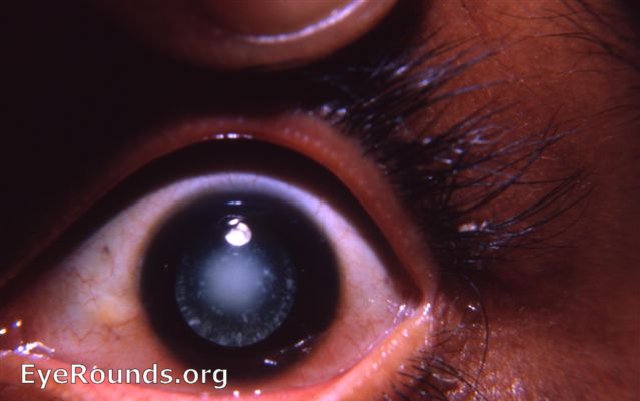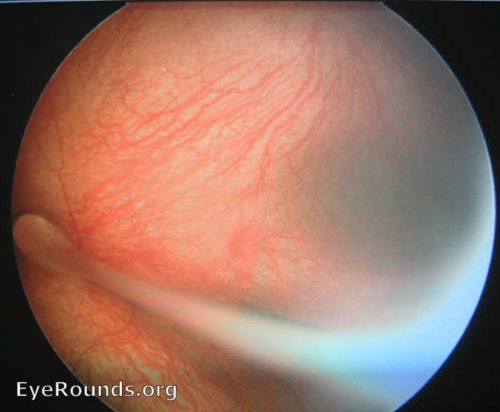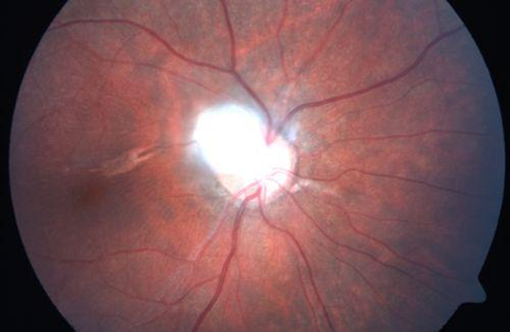3.Leucocoria
Common Causes
The more common causes are:

Source: EyeRounds.org.
Contributor: William Charles Caccamise, Sr, MD, Retired Clinical Assistant Professor of Ophthalmology, University of Rochester School of Medicine and Dentistry
Congenital Cataract
Coats disease
- Rare idiopathic unilateral retinal telangiectasia
- More prevalent in boys
- Usually occurs around 5 years of age

Image Credit: A. Alkaler
Persistent hyperplastic primary vitreous
- Occurs when the primary (embryonic) vitreous fails to regress
- Usually unilateral
- Vision is related to extent of posterior retinal involvement

Source: EyeRounds.org. Contributor: Andrew Doan, MD, PhD, University of Iowa.
Toxocariasis
- Rare worm infection aquired in early childhood
- Ocular involvement usually unilateral
- Posterior or peripheral retinal granuloma
- May be associated with chronic intraocular inflammation

Source: Adapted from an image uploaded to retinagallery.com by Steven Cohen.
Retinoblastoma
- Rare, but the most common intraocular malignancy in children
- Can be hereditary and bilateral
- Needs urgent ophthalmologist referral

Source: EyeRounds.org. Contributor: Andrew Doan, MD, PhD & James Coombs, MD, University of Iowa
